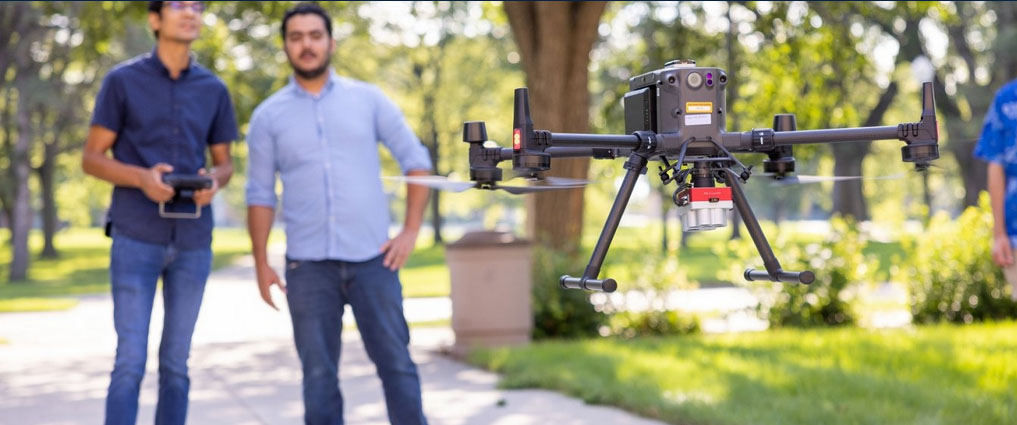



Program Coordinator/Contact
Bob Watrel, Department Head
Department of Geography and Geospatial Sciences
109 Wecota Hall
605-688-4511
Program Information
An uncrewed aerial vehicle (UAV), commonly known as a drone, is an aircraft without any human pilot, crew, or passengers controlling it from the inside. Uncrewed Aircraft Systems or UAS is the system behind what makes a drone or UAV work. This includes the equipment, accessories, and software needed to allow a UAV to fly autonomously or remotely. Uncrewed Aircraft Systems is a technology with many commercial applications, some of which include remote sensing, geographic information systems (GIS), precision agriculture, construction, resource management, engineering, cinematography, and emergency services. The minor provides the knowledge and skills necessary to apply this technology to a field of study or field of work. The minor covers mission planning and safety, how to acquire data using sensors, how to process acquired data, ethical considerations, and the basic components required to operate a UAS, among others. This minor provides the knowledge necessary to attain the FAA Part 107 small UAS license.
Course Delivery Format
Coursework for the program is delivered in multiple formats including face-to-face lecture and online courses.